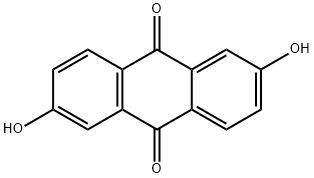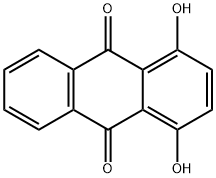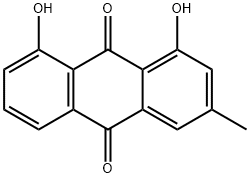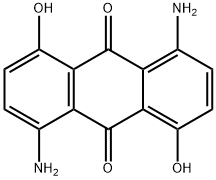A0880712
Anthraflavic Acid , >95.0% , 84-60-6
CAS NO.:84-60-6
Empirical Formula: C14H8O4
Molecular Weight: 240.21
MDL number: MFCD00001228
EINECS: 201-544-3
| Pack Size | Price | Stock | Quantity |
| 1G | RMB98.40 | In Stock |
|
| 5G | RMB369.60 | In Stock |
|
| 25G | RMB1299.20 | In Stock |
|
| 100G | RMB3516.80 | In Stock |
|
| others | Enquire |
Update time: 2022-07-08
PRODUCT Properties
| Melting point: | >320 °C(lit.) |
| Boiling point: | 342.92°C (rough estimate) |
| Density | 1.3032 (rough estimate) |
| refractive index | 1.5430 (estimate) |
| storage temp. | Sealed in dry,Room Temperature |
| solubility | Soluble in DMSO |
| form | powder to crystal |
| pka | 6.72±0.20(Predicted) |
| color | Light yellow to Brown to Dark green |
| Stability: | Stable. Incompatible with strong oxidizing agents. |
| InChIKey | APAJFZPFBHMFQR-UHFFFAOYSA-N |
| LogP | 3.360 (est) |
| CAS DataBase Reference | 84-60-6(CAS DataBase Reference) |
| EPA Substance Registry System | 9,10-Anthracenedione, 2,6-dihydroxy- (84-60-6) |
Description and Uses
Anthraflavic acid can be used as a starting material to synthesize tetrahydroxy tetrathiafulvalene (TTF) derivatives, which are used as redox-active building blocks in supramolecular and materials science. It is also utilized to prepare phosphanylidene anthra[2,1-b]furans by reacting with dialkyl acetylenedicarboxylates and triphenylphosphine.
Safety
| Symbol(GHS) |  GHS07 |
| Signal word | Warning |
| Hazard statements | H315-H319-H335 |
| Precautionary statements | P261-P264-P271-P280-P302+P352-P305+P351+P338 |
| Hazard Codes | Xi |
| Risk Statements | 36/37/38 |
| Safety Statements | 26-37/39-36/37 |
| WGK Germany | 3 |
| RTECS | CB6675000 |
| Hazard Note | Irritant |
| HS Code | 29146990 |




